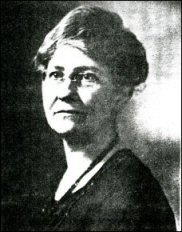|
 |
|
 |
Wednesday, February 11, 1948
Dipped ones were made like this: a number of which were stretched on a suitable frame and allowed to hang down at a distance from one other equal to about double the intended thickness of the candle; they were then dipped in a receptacle of melted tallow and hung up to cool. They were dipped again and again until the required thickness was attained. Of course, they were not as even and good looking as the later ones made in a mold, but they were used for many years by the first settlers.
Elisha Risdon wrote in his diary October 30, 1845, "Women dipping candles." They made candles frequently. The first candlesticks were not very ornamental, at least those I have seen, being made of tin and strictly utilitarian. But with the advent of molded candles and with woman's innate love of beauty, candlesticks took on more and more grace and beauty. It is inborn in a woman to love beauty in all the appurtenances of her life, even in those things which are made merely for utility or comfort. Candle molds are not very rare among antiques, so most everyone knows how the molded candles were made. One can have them wired for electric lights, or they may be used for holding flowers or vines, or simply left as they were intended to be.
As time passed, candlesticks grew more and more elaborate. They were made of brass, glass, pewter and silver. Other containers such as chandeliers and wall brackets kept pace with the growing prosperity and better living conditions as the pioneers outgrew their shanties and log houses. It required a good many candles to light a home as we would like to have it lighted. One can imagine a ball room, for instance, illuminated by scores of candles.
As time passed, very good-looking candle-sticks were seen, even in the old wood houses which I have been describing. Those of pewter were graceful and of a soft and gently glowing finish. Some years ago my neighbor, now gone, "Nell" Faulkner as we knew her then, gave me a pewter candle-stick which I cherish greatly. It had belonged to "Aunt Mary Fox" and was then more than a century old. When William Fletcher sold his belongings after the death of his wife, Hattie, I bought two brass candle-sticks which she had found at auctions. These I also value highly, but they need frequent polishing.
Some glass ones also came from auctions. When David Parish built his farm house in Parishville (now burned), his agent bought many fine furnishings. On the 22nd of March, 1814, he sent David a bill of the things which had recently been received. Among them were "six brass candle-sticks: $9.00; six japanned candle-sticks: $4.50; six common snuffers: $4.12; also three pairs candle-sticks (plates): $25." I do not know just what these were, but they were nice.
The agent also asked Parish to lay in a supply of matches and soap, as the roads were so bad he did not know when he could get out to buy things.
The glass candle-sticks, or sometimes of brass, trimmed with carved crystal prisms, were very beautiful. At that period of ornamentation, much fine handiwork was put on them. I have in mind a pair owned by Mr. and Mrs. Ira Sanford of Nicholville, inherited from his mother, Mrs. Jonan Sanford. They have been the envy of every woman who has beheld them, including myself. At least a half dozen of prisms on each one sparkled like diamonds. They are more than 100 years old.
The history of the evolution of candles and their holders is a fascinating story which expresses the various stages of the growth of taste and the acquiring of grace and beauty in the hard and bare days of the first pioneer times.
|